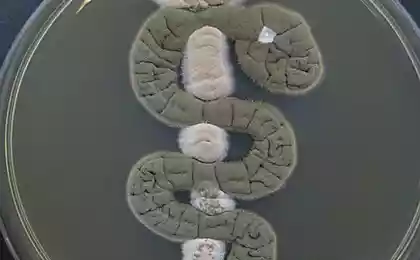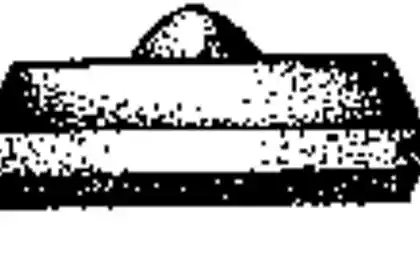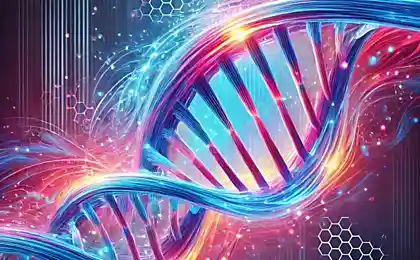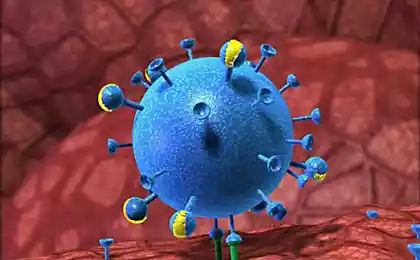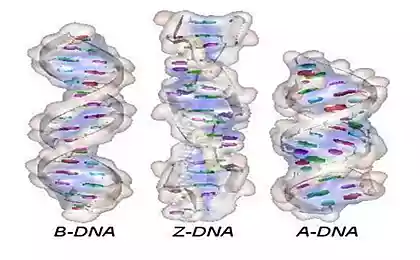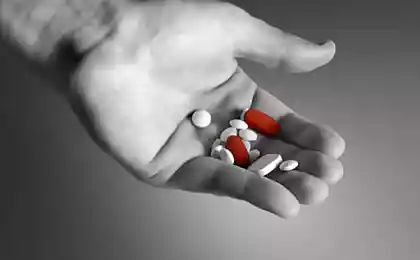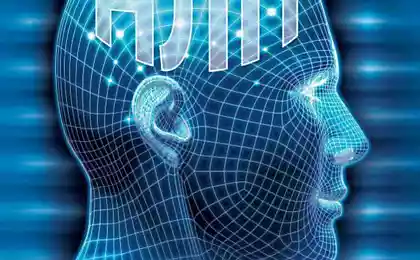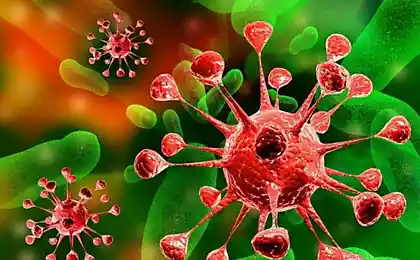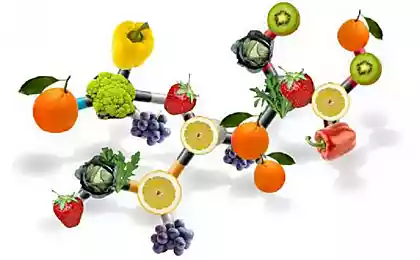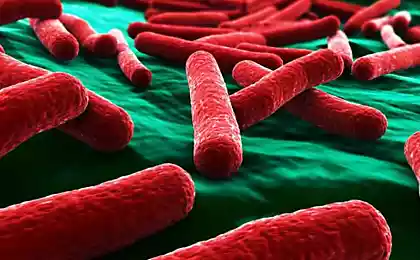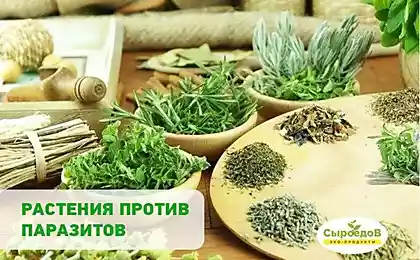581
Bacteria and viruses change their genetic code
Analysis kodonovye dictionary of bacteria and phages has shown that they deviate from the canonical values of the genetic code much more often than previously thought.
The genetic code is one of those things about which you know even people who are far from biology and science in General. We all know that the information about proteins encoded in DNA, and that this presents a different triple combinations of the four genetic letters A, T, G and C. Combination of three letters, a triplet, or codon, encodes one amino acid, but one amino acid usually corresponds to several codons. Reading radonaway information and turning it into a polypeptide chain occurs during translation at the ribosomes.
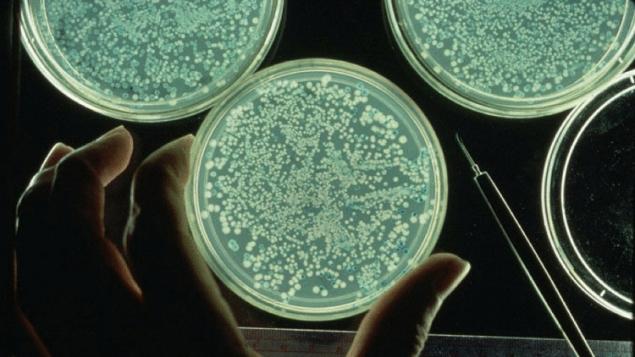
The genetic code is universal for all living beings – in the sense that they all use, and no alternative to it. But at the same time, some organisms of specific value triplets can change, for example, the codon of one amino acid can be assigned to another amino acid. In such cases we say about the differences from the canonical kodonovye dictionary, implying that the canonical dictionary, which is used by most organisms.
It may seem that such deviations from the canonical values in the genetic dictionary is something exceptional. But, as studies have shown Natalia Ivanova and her colleagues from the joint genome Institute, free treatment with values of codons found in nature much more often than would be expected – in any case, if we are talking about bacteria, viruses and their stop codons.
What is the stop codon? This is a triplet that marks the end of the coding region: when the ribosome is on an mRNA encounters a codon, it understands that the new amino acid to the polypeptide to attach, and releases sintezirovany polypeptide chain. The importance of such stop signals are easy to understand, imagine what would happen if some of them won't work. In this case, the protein molecule will grow a certain amount of amino acids after the ribosome continues to scan the mRNA and perceive new triplets as supporting information on the amino acids. This elongated protein can no longer perform its function.
However, sometimes a stream, that is, the protein passes through a terminator codon; in this case, the ribosome sees it as a "amino acid", i.e. encoding some amino acid, and the result still turns normal, functioning protein. That is, the cell uses a purposely edited version kodonovye dictionary.
The researchers decided to test how prevalent this phenomenon. To do this, they analyzed a huge dataset of size 5.6 trillion nucleotides that have been read in several tens of thousands of samples of bacteria and bacteriophages. Bacteria "involved" in the study lived in different ecological niches, among them was a marine, and freshwater, and soil, and those that can be found in the mouth and intestines, and many others; all these ecological niches were more than 1 700.
The analysis results surprised everyone: alternative values of stop codons was able to identify almost 10% of the samples. Moreover, the activity of all of the genetic code has redefined the bacteria of the human microflora, approximately half of which was a terminator codon is read as meaning, that is, encoding any amino acid. Again, what about the alternative use of stop codons biologists have known for a long time, but no one thought it could be so widespread.
As explained by the authors, the idea of canonical stop codons arose in and after studying the genetic code of bacteria, but those studies were conducted in bacteria that are easy to grow in the laboratory. The majority of bacteria in the laboratory do not grow, because it is still unclear how to provide them with a comfortable living environment. And though then the genomes of bacteria such naughty, too, learned to read, no one analyzed the data obtained for compliance with the canonical rules.
Now it turns out that many bacteria do without the seemingly universal rules of stop codons. Such a large number of cases the use of a terminator codons not on purpose suggests that the rule in this case is rather relative in nature, that the meanings of codons, at least, stop codons can easily adapt to any need of the cell. However, for it is only bacteria and parasites on these viruses; the eukaryotic system may comply with the stop codons with the utmost rigor.
Incidentally, in the progress of the analysis showed a rather unusual divergence between bacteria and bacteriophages: if the bacteria preferred to pereozvuchivat one of the stop codons, the phages did this with two other canonical terminator triplets. It would seem that the bacteriophages that are completely dependent on ribosomes and other translational proteins, have to stick to exactly the same version kodonovye dictionary, and their hosts are bacteria. However, this apparently does not occur, and bacterial viruses do not experience any discomfort due to the fact that they have to deal with translation machine "tuned" to other values of some codons.
I must say similar things and Kononovym a dictionary trying to make themselves biologists. In 2011, researchers from the Massachusetts Institute of technology in collaboration with colleagues from Harvard and Yale have managed to reset the value of one of the triplets of the genetic code of Escherichia coli, and two years later the same team assigned to a vacant codon artificial amino acids (the bacteria had to provide multiple protein and RNA transport that catered to this new amino acid).
Editing the genetic code, researchers hope to create synthetic organism with desired properties, and perhaps if we learn both by the bacteria can change the value of its khodonovich words, work in this direction will go faster.
Source: nkj.ru
The genetic code is one of those things about which you know even people who are far from biology and science in General. We all know that the information about proteins encoded in DNA, and that this presents a different triple combinations of the four genetic letters A, T, G and C. Combination of three letters, a triplet, or codon, encodes one amino acid, but one amino acid usually corresponds to several codons. Reading radonaway information and turning it into a polypeptide chain occurs during translation at the ribosomes.

The genetic code is universal for all living beings – in the sense that they all use, and no alternative to it. But at the same time, some organisms of specific value triplets can change, for example, the codon of one amino acid can be assigned to another amino acid. In such cases we say about the differences from the canonical kodonovye dictionary, implying that the canonical dictionary, which is used by most organisms.
It may seem that such deviations from the canonical values in the genetic dictionary is something exceptional. But, as studies have shown Natalia Ivanova and her colleagues from the joint genome Institute, free treatment with values of codons found in nature much more often than would be expected – in any case, if we are talking about bacteria, viruses and their stop codons.
What is the stop codon? This is a triplet that marks the end of the coding region: when the ribosome is on an mRNA encounters a codon, it understands that the new amino acid to the polypeptide to attach, and releases sintezirovany polypeptide chain. The importance of such stop signals are easy to understand, imagine what would happen if some of them won't work. In this case, the protein molecule will grow a certain amount of amino acids after the ribosome continues to scan the mRNA and perceive new triplets as supporting information on the amino acids. This elongated protein can no longer perform its function.
However, sometimes a stream, that is, the protein passes through a terminator codon; in this case, the ribosome sees it as a "amino acid", i.e. encoding some amino acid, and the result still turns normal, functioning protein. That is, the cell uses a purposely edited version kodonovye dictionary.
The researchers decided to test how prevalent this phenomenon. To do this, they analyzed a huge dataset of size 5.6 trillion nucleotides that have been read in several tens of thousands of samples of bacteria and bacteriophages. Bacteria "involved" in the study lived in different ecological niches, among them was a marine, and freshwater, and soil, and those that can be found in the mouth and intestines, and many others; all these ecological niches were more than 1 700.
The analysis results surprised everyone: alternative values of stop codons was able to identify almost 10% of the samples. Moreover, the activity of all of the genetic code has redefined the bacteria of the human microflora, approximately half of which was a terminator codon is read as meaning, that is, encoding any amino acid. Again, what about the alternative use of stop codons biologists have known for a long time, but no one thought it could be so widespread.
As explained by the authors, the idea of canonical stop codons arose in and after studying the genetic code of bacteria, but those studies were conducted in bacteria that are easy to grow in the laboratory. The majority of bacteria in the laboratory do not grow, because it is still unclear how to provide them with a comfortable living environment. And though then the genomes of bacteria such naughty, too, learned to read, no one analyzed the data obtained for compliance with the canonical rules.
Now it turns out that many bacteria do without the seemingly universal rules of stop codons. Such a large number of cases the use of a terminator codons not on purpose suggests that the rule in this case is rather relative in nature, that the meanings of codons, at least, stop codons can easily adapt to any need of the cell. However, for it is only bacteria and parasites on these viruses; the eukaryotic system may comply with the stop codons with the utmost rigor.
Incidentally, in the progress of the analysis showed a rather unusual divergence between bacteria and bacteriophages: if the bacteria preferred to pereozvuchivat one of the stop codons, the phages did this with two other canonical terminator triplets. It would seem that the bacteriophages that are completely dependent on ribosomes and other translational proteins, have to stick to exactly the same version kodonovye dictionary, and their hosts are bacteria. However, this apparently does not occur, and bacterial viruses do not experience any discomfort due to the fact that they have to deal with translation machine "tuned" to other values of some codons.
I must say similar things and Kononovym a dictionary trying to make themselves biologists. In 2011, researchers from the Massachusetts Institute of technology in collaboration with colleagues from Harvard and Yale have managed to reset the value of one of the triplets of the genetic code of Escherichia coli, and two years later the same team assigned to a vacant codon artificial amino acids (the bacteria had to provide multiple protein and RNA transport that catered to this new amino acid).
Editing the genetic code, researchers hope to create synthetic organism with desired properties, and perhaps if we learn both by the bacteria can change the value of its khodonovich words, work in this direction will go faster.
Source: nkj.ru
At Franklina Zoo on the world's surface, a bird's tail
Historic castle in the countryside Warickshire
